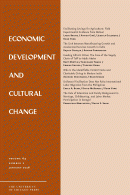Ethnicity and Earnings in a Mixed-Race Labor Market
| Year | : | 2007 |
|---|---|---|
| Author/s | : | Hugo Ñopo, Maximo Torero |
| Area/s | : | Employment, productivity and innovation, Ethnicity, gender and citizenship |
Ñopo, Hugo; Jaime Saavedra y Máximo Torero (2007). Ethnicity and Earnings in a Mixed-Race Labor Market. Economic Development and Cultural Change, University of Chicago Press, vol. 55, pages 709-734.
The study examines the relationship between earnings and racial differences in a context in which various races have coexisted and mixed during several centuries, as is true in many parts of the postcolonial world and specifically urban Peru. Coarse indicators of racial differences do not suffice in capturing this relationship; therefore, the authors introduce a score-based procedure of white and indigenous racial intensities that allows them to approximate these mixed racial heritages. The authors introduce a score-based procedure of white and indigenous racial intensities that allows us to approximate the heterogeneity within the mestizo population. The authors construct two types of indicators of racial intensities using a score-based procedure: a single-dimensional indicator of degrees of whiteness and a two-dimensional indicator combining degrees of both whiteness and indigenousness. This second indicator allows them to study nonlinearities in earning differences across mixed white and indigenous racial characteristics. Their estimates from a semiparametric model show evidence of a race premium for whiteness on earnings, statistically significant among wage earners but not among the self-employed. These results may be consistent with a story of employer discrimination.






